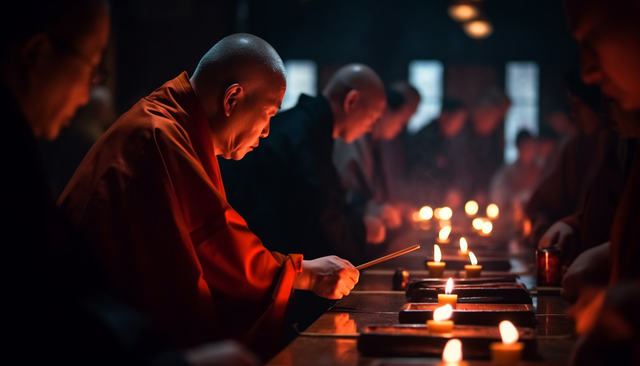
Grief touches everyone in unexpected ways, often arriving uninvited and reshaping our worlds. It can leave people searching for meaning or simply the strength to get through the next day. While there’s no single path through sorrow, certain perspectives and practices can offer a sense of stability. Approaching grief with presence, compassion, and intention allows space for healing, even when the pain feels overwhelming.
Practices drawn from mindfulness and Buddhism, as well as simple rituals and self-care, can gently support this process. It’s not about fixing grief but learning how to live with it—so that even in loss, one can remain connected to life and others. This journey is deeply personal, but doesn’t have to be faced alone. Through reflection and support, grief can slowly transform, as Robert Beatty notes, making room for recovery without forgetting what was lost.
Understanding the Experience of Grief
Grief can appear in many shapes—emotional waves, physical fatigue, or a sense of disconnection from the world. It often follows loss, but its shape and timeline differ for everyone. Some feel numbness, while others face intense emotions without warning.
Daily routines may feel unfamiliar or hollow, and relationships might shift as people around you respond in their own ways. A once confident person may find themselves uncertain, struggling to be present in their own life. Even simple decisions can feel overwhelming during these times.
Rather than rushing through recovery, it helps to recognize grief as a human response. Allowing space for sorrow, confusion, or even moments of peace can be the first step toward healing. There’s no fixed timetable—grief moves at its own pace.
Presence Through a Buddhist Lens
In Buddhism, presence is rooted in mindful awareness—being fully engaged with what is happening right now, without trying to escape or hold on. This presence is not passive; it’s a deliberate turning toward life as it is, even when it’s painful. In grief, this can mean sitting quietly with sadness instead of pushing it away.
Buddhism also teaches that everything changes. The impermanence of all things, including our emotions and relationships, is not meant to dismiss loss but to help us soften our grip on what we cannot control. Rather than resisting change, we make room for it, allowing sorrow and gratitude to exist side by side. This doesn’t require someone to be Buddhist—it simply offers a framework for being more present and compassionate with our inner experience.
Mindfulness as a Tool for Grounding
Mindfulness creates a pause between feeling and reaction. In the haze of grief, that pause can be the difference between being overwhelmed and finding a sense of steadiness. Paying attention to the breath or noticing the weight of your body in a chair can help anchor you when emotions feel too large. Even naming what you feel in the moment—grief, anger, numbness—can help you stay present.
Some find clarity in walking slowly, feeling the rhythm of each step, or by placing a hand over the heart during moments of emotional surges. These small acts bring the body and mind back to the present, where healing begins. Mindfulness doesn’t make grief disappear, but it gives it a container—a space where emotions can arise and settle without judgment.
Practicing Self-Compassion During Loss
When grief feels sharp, harsh self-talk can deepen the wound. A gentle inner voice, one that acknowledges pain without rushing to fix it, can provide a soft place to land. Self-compassion means treating yourself as you would a dear friend—offering patience, warmth, and understanding, especially when things fall apart. This might be the first time you allow yourself to truly rest without guilt.
Some days, compassion might look like stepping away from responsibilities to rest. On others, it might be allowing tears without shame or choosing nourishing food when nothing sounds appealing. These small gestures remind us that kindness toward ourselves is not indulgence—it’s essential care in times of sorrow. Even wrapping yourself in a blanket or creating a quiet space to breathe can serve as a meaningful act.
Daily Practices for Healing
Simple rituals can create rhythm and meaning during the disorientation of grief. Lighting a candle at the same time each evening or spending a few quiet moments beside a photograph can become anchors amid emotional turbulence. These acts help form a bridge between memories and the present.
Others may find peace in daily walks, journaling, or preparing a favorite meal of the person they lost. These practices don’t need to be elaborate. What matters is their consistency and their ability to connect you with the present moment while honoring what was. These rituals become quiet companions on the path of healing. Even the act of watering a plant or visiting a familiar place can carry immense emotional weight and comfort.
There is strength in reaching out to a therapist, a spiritual guide, or simply someone who listens without trying to fix. Healing rarely happens in isolation. As presence deepens, so does our capacity to live with purpose, even after loss. Intention gives shape to the next steps, not as a plan to erase the grief, but to walk alongside it with clarity and care. With each step, new meaning can emerge, and life can be reimagined without letting go of love.
Disclaimer
The information contained in South Florida Reporter is for general information purposes only.
The South Florida Reporter assumes no responsibility for errors or omissions in the contents of the Service.
In no event shall the South Florida Reporter be liable for any special, direct, indirect, consequential, or incidental damages or any damages whatsoever, whether in an action of contract, negligence or other tort, arising out of or in connection with the use of the Service or the contents of the Service. The Company reserves the right to make additions, deletions, or modifications to the contents of the Service at any time without prior notice.
The Company does not warrant that the Service is free of viruses or other harmful components












